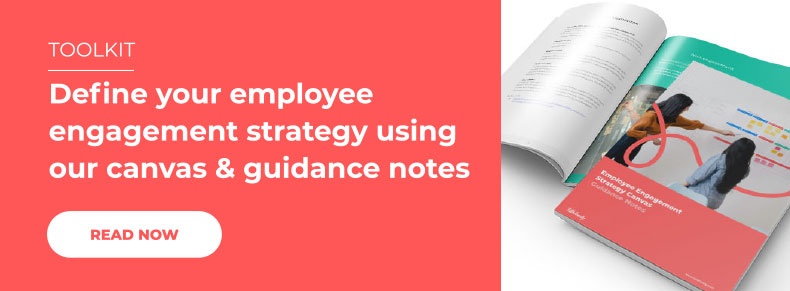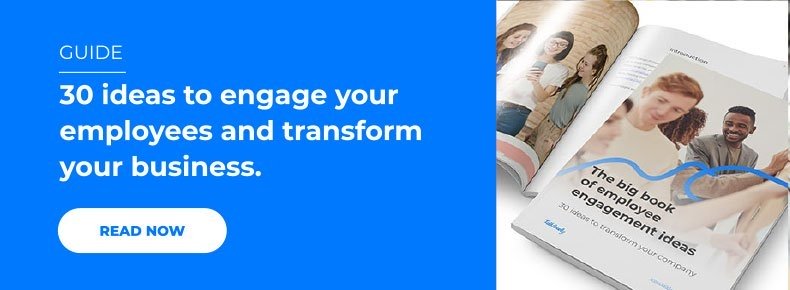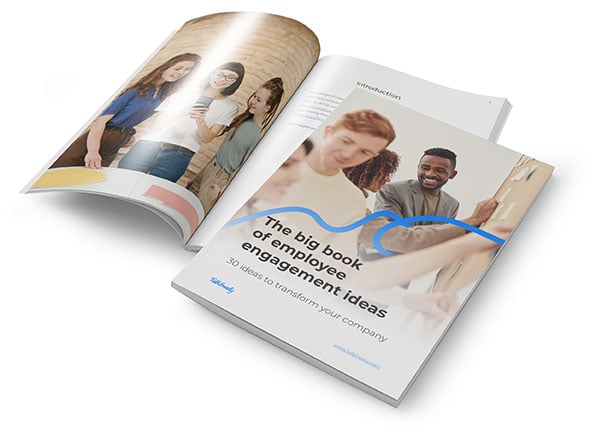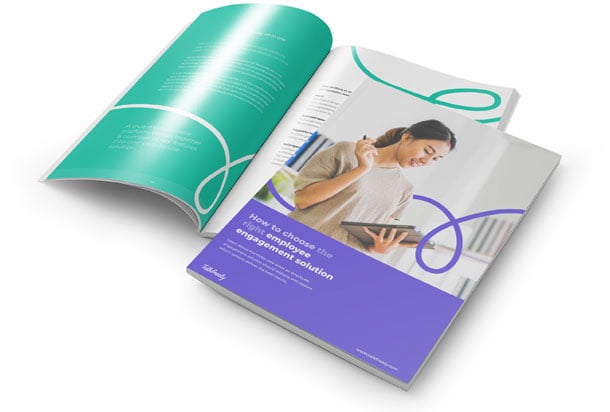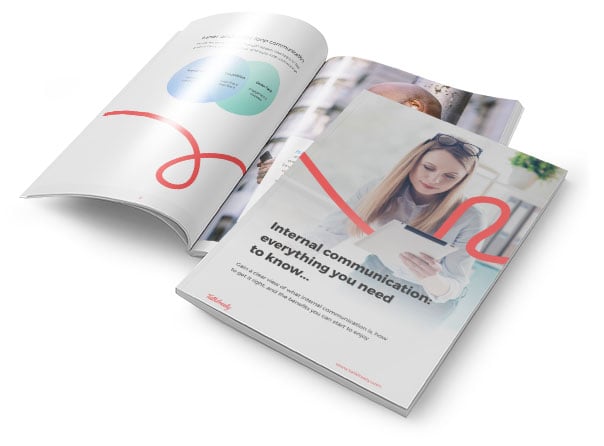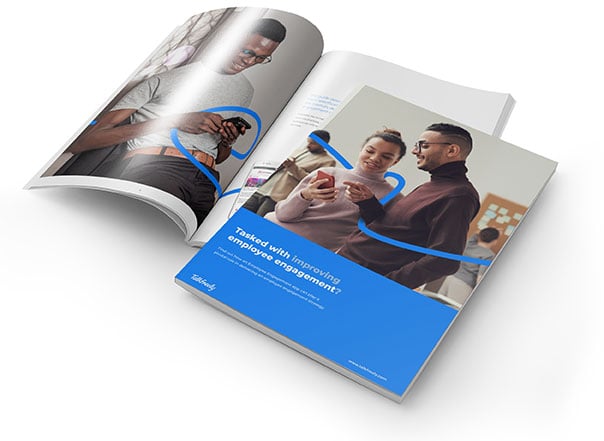It’s not what you say; it’s how you say it. This is especially relevant in the sphere of employee engagement, where the way in which you present information has a huge bearing on how it is received. In today’s working environment, information overload is a very real problem. The average UK employee receives around 120 emails a day, according to the latest research. Unless you can find a way to cut through the noise, your messaging will get lost in the deluge.
This is where practical employee engagement tools come into play. By selecting the right tool for the right message, you’ll be able to reach your employees, however busy and distracted they might be. It is particularly pertinent in the hybrid working setup. With employees working away from the office hub, you need to ensure you are using employee engagement activities that reach them without fail, wherever they may be that day.
These seven key tools for employee engagement will help you reach your audience, in the right way, at the right time.
Tool #1: Notifications
Sometimes, you need to get the message out immediately. This is where an email can let you down. Your urgent communications could easily get lost in an overloaded inbox. When you need to contact your workforce with high-priority updates, you need a tool that instantly delivers. That’s where the push notification comes into play. It’s an employee engagement tool that is 100% proactive, with the capability to deliver information in the moment.
Employee engagement best practice demands that your communications should reach everyone at the same time. Wherever they are, whatever they’re doing. It doesn’t matter if they’re in the office, at home, in a meeting, or on the road; your messaging needs to reach them. That’s what push notifications achieve. If you need to distribute urgent information without delay, they are your instant solution.
So, what’s the best way to deliver this high-performing employee engagement tool? One slick solution is an employee engagement app. It will effortlessly reach every single employee, wherever they are, and deliver your message directly.
Tool #2: Newsfeed
A dedicated newsfeed is one of the hardest working employee engagement tools. It’s the surefire way to ensure essential information is seen by every employee. A regular stream of company news and updates is highly effective at keeping employees in the loop. And that applies to hybrid workers too, who often miss out on company updates by not being in the office at the right time.
A well-planned newsfeed will keep your workers aligned with your company goals, strategic priorities and overall mission. The regular updates will also create that vital sense of belonging that often gets lost in the daily grind of remote working. With social media so engrained in everyday life, employees have almost come to expect a regular stream of posts, both inside and outside of the office.
But how can you put this newsfeed in place without adding hours to your workload? That’s where employee engagement platforms come to the rescue. They will allow you to create a dedicated company news channel that is branded, personalised, and ready to go. The addition of branding means it is a platform that employees can trust and rely on. Plus, a ready-made platform will help you connect with those hard-to-reach employees who have previously remained outside the communication loop.
Tool #3: Innovation
Your employees are full of great ideas. So why not tap into this source of inspiration, and boost engagement at the same time? Make an innovation platform part of your employee engagement toolkit. It’s the ideal way to capture ideas and promote a company ethos of innovation and continuous improvement. If you’re looking for new ways to increase employee engagement, this is an instant winner.
An innovation platform gives you a unique space to capture employee suggestions. It will allow you to post business challenges and gather ideas from across your workforce. You will also be able to rate and discuss the suggestions, adding an extra element of employee participation into the mix. Allowing colleagues to actively participate in the consideration of ideas is a prime way to boost work engagement across the company.
A word of warning; make sure you follow through with the ideas. Employees don’t want to see their carefully considered proposals falling into a black hole, never to be seen again. An employee engagement app will have a built-in idea management workflow, ensuring that any ideas that make the grade are followed through and implemented into office life. There’s nothing more motivating than seeing a suggestion come to life.
Tool #4: Recognition
Few things are as effective as a public thank you. Whereas public criticism tends to trigger a defensive reaction, public praise is a huge positive. The openness of the praise tends to lend more weight to the comment. Plus, it encourages others to emulate whatever was great. As an employee engagement tool, recognition should be right up there on your list.
Recognition, when used effectively, creates a positive company culture of recognition and appreciation. However, it’s not always simple to celebrate success across the company. Some achievements will need to be promoted within teams or departments, while others can be publicised company-wide. As a critical driver of employee engagement and motivation, recognition should always be aligned with company values to ensure maximum impact.
An employee engagement platform will help you to create a recognition scheme that really works. The right platform will make it easy to deliver a peer-2-peer recognition initiative that encourages interaction. With social tools, such as likes and comments, employees can contribute their feedback and celebrate successes. You can also restrict access within teams or departments to ensure the right people see the right information.
Tool #5: Conversations
Water cooler chat is a thing of the past. Now, with teams working remotely, in hybrid patterns and hot-desking around the office, you can no longer rely on the office environment to deliver a social hub. So what happens to the conversations? Do they die out, taking away that essential social aspect of the working day? Or do you implement employee engagement tools to keep the office chat alive?
The answer is to create social spaces online. With the right tools, you can create a welcoming social space where employees can meet, chat and share. It should offer the opportunity for private conversations as well as group discussions. And, like all the best employee engagement ideas, it should be effortlessly simple to bring employees on side. By gathering everyone together, you’ll not only keep business operations front of mind, but you’ll also get back that crucial communal element that is so often missing from today’s workplace.
How can you get the conversation started? An employee engagement app will provide a ready-made platform for employees to join. And because employee apps are so effective at bringing everyone on board, even the hard-to-reach workers, you’ll know that the conversation includes all. This hardworking employee engagement tool will cultivate a commitment to shared goals, boost cooperation and restore some joy to the working day.
Tool #6: Feedback
Your communications should be more than a one-way street, delivering information and directives from on high. They should be a free-flowing two-way channel of communication. In other words, you need to let your employees have a say. The employee voice is a fundamental element of every employee engagement strategy. Workers will quickly become demotivated without the opportunity to speak out and be heard.
A feedback channel is one of the key tools for employee engagement. It will ensure you know what your employees are really thinking and allow you to keep on top of rumours or discontent. A classic way to encourage feedback is via an employee engagement survey. But there’s no need to launch an extensive survey every time. It’s just as effective to send out quick polls or quizzes to check on specifics such as job roles, company policies and work conditions.
An employee engagement platform will do all the hard work for you. Built-in feedback modules allow you to create everything from simple polls to advanced logic surveys, schedule them in advance and collate the answers in a robust report. If you’re exploring diagnostic tools for measuring employee engagement, a good feedback module should be your first choice.
Tool #7: Measurement
How do you know it’s working unless you measure it? There’s no point in scheduling a stellar stream of communications without first ensuring that you have a way of monitoring the impact. For a truly effective employee engagement model, you must continually evaluate engagement levels and adjust your strategy accordingly. You need to measure effectiveness at every step. And you need to use the right employee engagement tool to do it.
An employee engagement app will help you monitor your effectiveness. It will allow you to dig deeper into the details with reports that collate module, post, and employee performance. You’ll also be able to monitor your eNPS (employee Net Promoter Score) to keep track of loyalty levels. Understanding your audience is crucial too. Look for an app that includes dashboards, allowing you to compare how teams and divisions interact.
When exploring how to measure employee engagement, you will need the right tools in place. There are a number of diagnostic tools for measuring employee engagement. Look for tools with built-in reporting and masses of detail. You should be able to conduct an in-depth analysis of engagement levels, you should be able to schedule check-ups, and you should be able to find out exactly who is engaging, and who isn’t. Without measurement in place, you are shooting in the dark.
